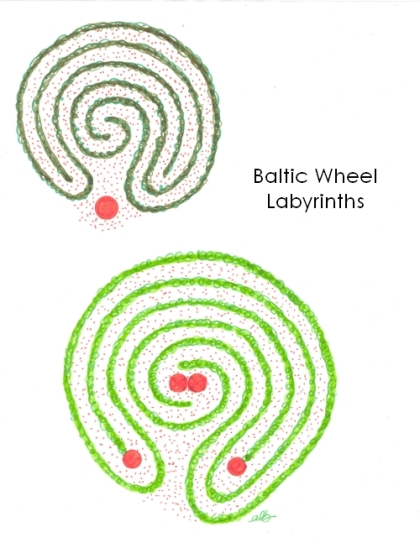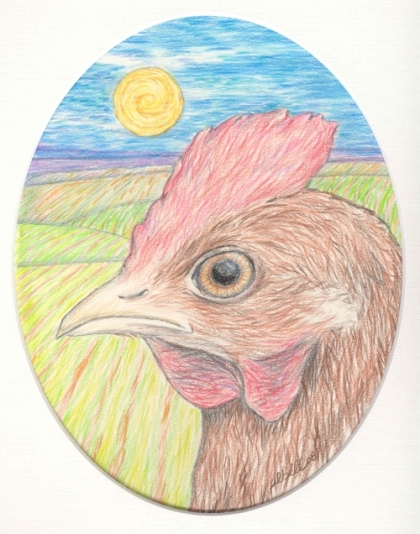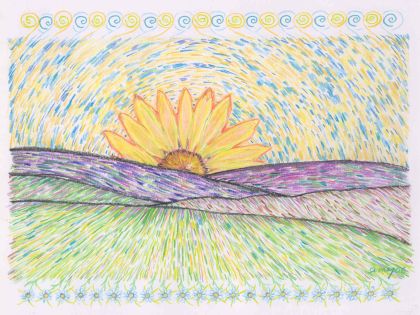The Baltic Wheel
December 12, 2009
 Throughout the ages, various cultures have created labyrinths to provide users with the opportunity to reflect while in motion along a given path. Their design integrates the circle with the spiral, two of the earth’s oldest symbols.
Throughout the ages, various cultures have created labyrinths to provide users with the opportunity to reflect while in motion along a given path. Their design integrates the circle with the spiral, two of the earth’s oldest symbols.
Forms are numerous, with applications in a variety of sizes and materials (stones, sticks, plants, fabric) created for either indoor or outdoor use.
Scandinavian in origin, the Baltic Wheel labyrinth provides two paths to the centre: a long and a short.
The above drawings are preliminary sketches for a labyrinth that is presently in the planning stage for the MacDonald Park in Eastern Passage, Nova Scotia. The scarlet circles show possible placement of mosaic tiles.
The hedge border will be Autumn Joy Sedum.
Chicken Combs and Wattles
May 6, 2009
 Perhaps it’s because we eat chicken that we don’t take the time to learn more about them. Making a drawing of one is a great way to study some of their features.
Perhaps it’s because we eat chicken that we don’t take the time to learn more about them. Making a drawing of one is a great way to study some of their features.
Both chickens and roosters have combs and wattles. There are many different types of combs, and the ones on roosters’ heads are often, but not always, more prominent. The wattles are folds of flesh hanging beneath their beaks that act as the bird’s cooling system.
Whenever we encounter unusual features on a subject, we’re forced to draw what we see instead of what we *think* we see. Too often we rely on previous knowledge of a subject in order to create a new drawing. We fail to make the most of the present moment to discover something new or appreciate familiar details in a different light. Like any other discipline, drawing only what we see takes focus and attention to detail, but is well worth the effort.
This drawing was made with colored pencils.
Sunrise
March 23, 2009

Only that day dawns to which we are awake. There is more day to dawn. The sun is but a morning star.
~ Henry David Thoreau
Maybe it’s not a star. Maybe it’s a flower. It all depends on your point of view and how much you squint your eyes.
Eye squinting is a very helpful practice in drawing and design. It eliminates many of the distracting details, revealing the essence of a form. If something looks a bit off balance, squint your eyes and remove all doubt.
The above landscape was done in coloured pencils. The model for the flower was an Oxeye Daisy that I tried to make more golden. I was trying to emulate Van Gogh’s style of bold strokes and strong contour lines. Maybe I should have gone all the way and used a Sunflower too!
Uluru
December 5, 2008

Above is a simple landscape showing Ayers Rock. As I’ve never been to Australia, it was inspired by the scene behind the opening credits in the Walt Disney movie, ‘The Rescuers Down Under.’ For years I used this scene as an introduction to landscape drawing to children in my art classes. It was quite a crowd pleaser. Executed step-by-step as a group, the simple design allowed each student to create a successful rendering of Uluru, the sacred rock.
This is an enhanced coloured pencil version of the drawing I taught my classes, with added colour and textures.